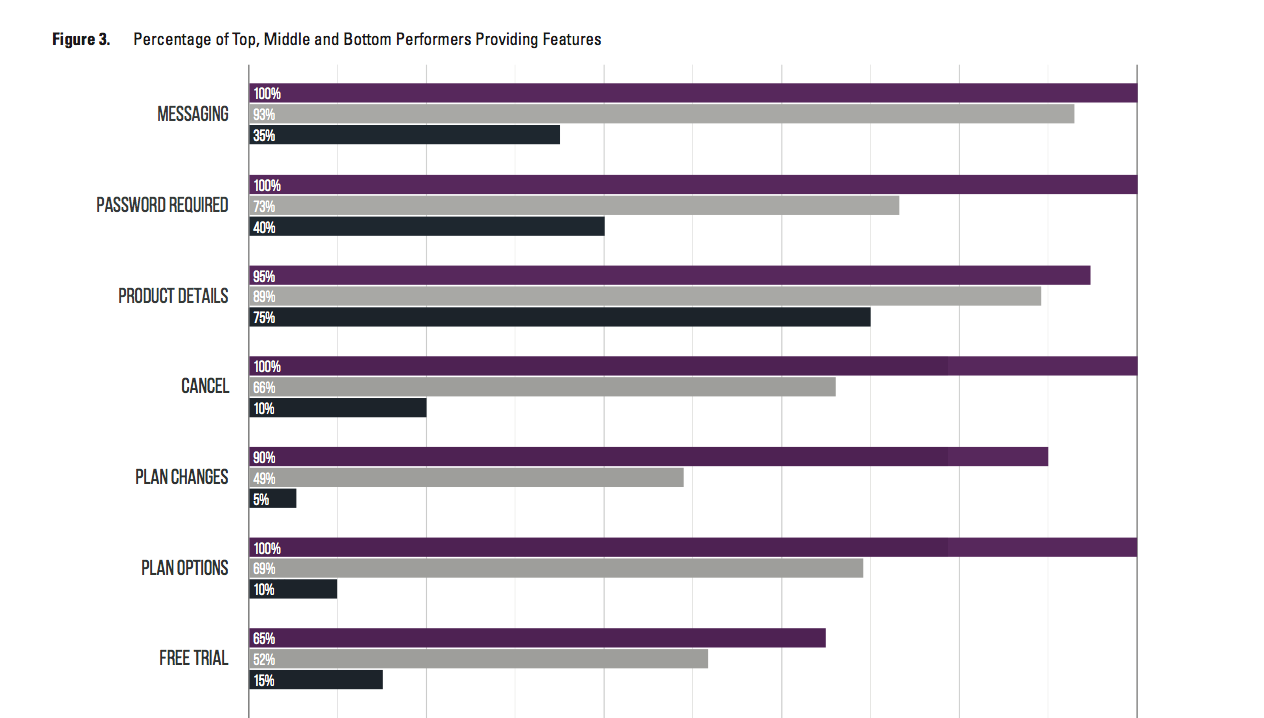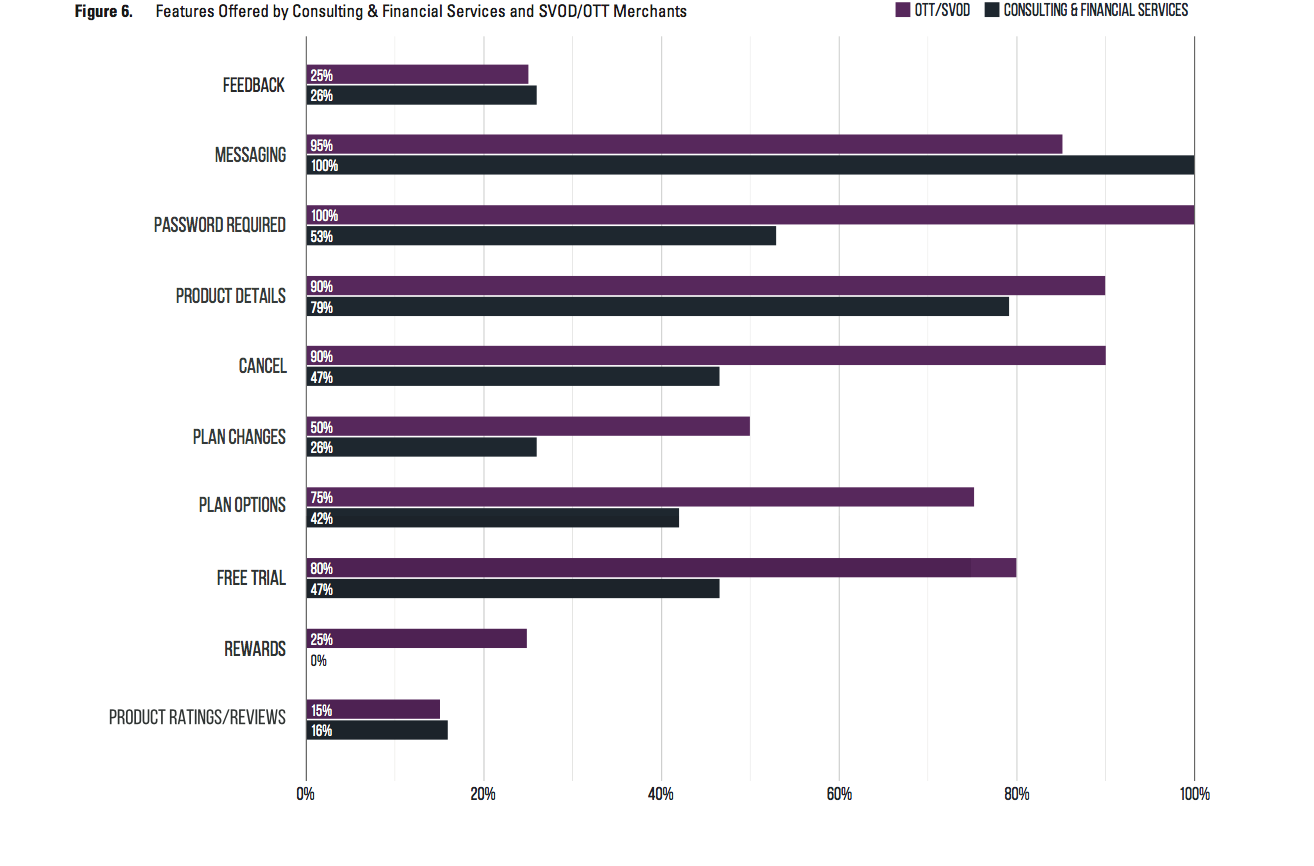Top Subscription Services Find Success With Free Trials

In many businesses, acquiring customers used to be a function of where the business was located — a high traffic intersection for a convenience store or a well-heeled mall for a clothing retailer. Technology, of course, changed all that. It’s also made the offering of subscription services a robust channel for a business to operate in. By one measure, subscription company websites have seen visitor growth of over 800 percent since 2014.
Successful subscription businesses require execution, not location, in making customer experiences frictionless. The most effective subscription sites excel at four key factors: time, password implementation, plan options and free cancellation, according to the Subscription Commerce Conversion Index (SCCI). There’s another key feature that’s used inconsistently across the industry: free trials. Fully 65 percent of the best performers in subscriptions offer free trials, according to the SCCI, which defines the best performers as the top 20 percent of the 178 merchants analyzed. Of the bottom fifth of companies, just 15 percent offer free trials. One argument against free trials is that they cost money and effort and may not result in a paying customer. In the Software as a Service (SaaS) and Cloud Computing space, some experts say even the best subscription converters see 25 percent of free trial customers become paying subscribers.

Other industries see lower conversion rates — 1 percent to 10 percent, according to a 2012 study. That’s potentially a lot of up-front spending for revenue that may take some time to recover through each successfully acquired subscriber. Then there’s the possibility of free trial abuse too, where someone uses different contact methods to take advantage of a trial more than once. Experts say both concerns are overblown.
“Think of it this way: a free trial is not giving away your product for free, but rather making your user acquisition process more effective,” said Kristin Eberth, director of marketing and communications for Press Reader, a news subscription service. “You’re making it easier for people who need and want your product to become paying customers. You’re bringing them partially on board without having to address every one of their questions, hesitations and concerns. And from their point of view, you’re bearing all of the risk if they don’t like your product, rather than forcing them to incur a financial risk. The free trial helps to minimize friction for users at the outset.”
The data backs Eberth up. The SCCI research shows that a common feature among most of the best performers in subscription conversion is offering free trials. SVOD/OTT is the best performing sector in the quarterly Subscription Commerce Conversion Index. Fully 80 percent of the industry offers free trials, in contrast to just 47 percent in Consulting/Financial services, the lowest performing of the nine industry sectors analyzed by the index.

Netflix is perhaps the best example of the benefit of free trials. The streaming company counts about nine percent of its users at any one time as free trial users — which may seem like a lot, until considering the conversion rate on those free trials is an astounding 93 percent, according to Merriman Capital stock analyst Eric Wold, who has tracked Netflix’s trial-to-subscriber trends for more than eight years. It’s a sign a good service or product will get customers’ attention and commitment.
Free trials can also be a way to change customer behavior in a way to benefit the business. Web men’s clothing retailer JackThreads saw early success in moving away from flash sales by instead offering everything free to try for a week, with customers charged only for what they didn’t return. The same strategy has been used to even greater success by Rockets of Awesome, a retailer of children’s clothing. A profile is created for new customers which the company uses to ship a box of items each quarter. Parents pay only for the items they like, shipping back what they don’t like. Shipping is free for customers each way — and if a happy customer likes everything they get, they receive a 25 percent discount off the price. “It’s a really risk-free way of doing a shop each season,” Rockets of Awesome founder and CEO Rachel Blumenthal said.
Scott D. Anthony, managing partner of consulting firm Innosight, says free trials are a great way to test various ideas in a real world setting, but cautions that sometimes they don’t provide clear cut results and that further tweaking for trials may be needed to optimize a marketing approach. One thing to keep in mind is that while free trials are a great way to get consumers to try a product, free trial consumers are probably inclined to value the product or service less than customers acquired in other ways, according to a 2015 study in the Journal of Marketing Research. The researchers found in one company they were able to study that the lifetime customer value of a free trial convert was about 40 percent of the value of a customer acquired in other ways, such as through direct marketing.
A key factor to increasing free trial conversion into subscriptions — and to those subscribers staying longer once signed up — is to boost marketing efforts during the free trial process, according to the study. The more a customer uses a service during a free trial, the more likely they are to then have a higher perceived value of what’s being offered. Subscription commerce platform Recurly, which collaborates with PYMNTS on the Subscription Commerce Conversion Index, says retailers should structure free trial periods to a length of time that lets the end-user familiarize themselves with the product or service, but not enough to potentially use up most or all of what’s offered, as with an entertainment service’s content library.